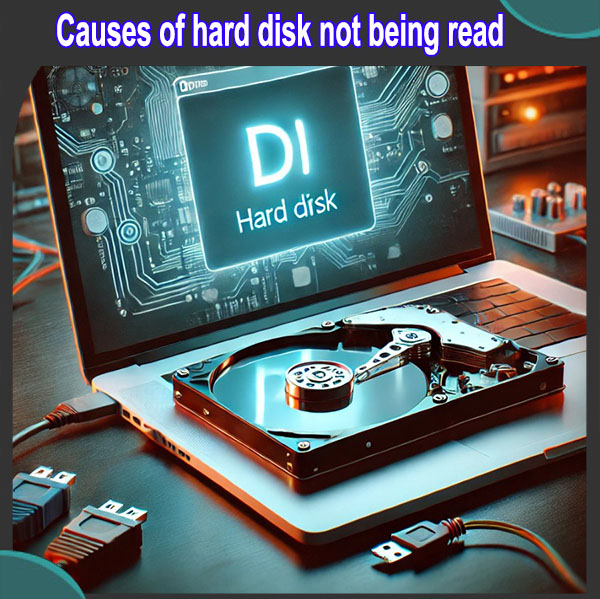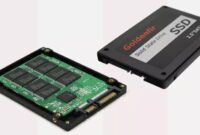Causes of a Hard Disk Not Being Read
A hard disk is a crucial component in any computer system, as it stores data, applications, and operating system files. When a hard disk is not being read or detected by the computer, it can result in data loss, system malfunction, or a total inability to boot the machine. In this article, we’ll explore the common causes of hard disk issues, troubleshooting tips, and preventative measures to avoid such problems.
1. Loose or Damaged Connections
One of the simplest and most common reasons for a hard disk not being read is a loose or damaged connection. The hard disk is connected to the motherboard via SATA cables or power connectors. If these cables become loose, damaged, or improperly connected, the system may fail to recognize the hard disk.
Solutions:
- Check connections: Power off your computer, open the case, and inspect the SATA cables. Ensure that both the data and power cables are securely connected to the hard disk and motherboard.
- Replace faulty cables: If the cables are visibly damaged or frayed, consider replacing them with new ones.
- Reseat the drive: In some cases, simply unplugging and re-plugging the drive may resolve the issue.
2. Hard Disk Failure
A more serious issue is physical hard disk failure. Hard drives have moving parts, and over time, these components can wear out, leading to disk failure. This can happen due to manufacturing defects, extended use, or exposure to extreme conditions.
Signs of Hard Disk Failure:
- Clicking noises: If you hear strange noises coming from your hard disk, such as clicking or grinding, this could indicate physical damage to the drive’s components.
- Slow performance: If your computer takes longer to read or write data, it could be a sign that your hard disk is failing.
- Frequent crashes: Sudden system crashes or blue screen errors may point to disk problems.
Solutions:
- Data backup: If your hard drive shows signs of failure, immediately back up important data to another device or cloud storage to prevent data loss.
- Drive replacement: Once the hard disk fails, the only viable solution is to replace it with a new one.
- Data recovery: In some cases, data recovery services can retrieve information from a failed disk, but this process can be expensive.
3. Corrupted File System
Another potential cause of a hard disk not being read is a corrupted file system. File system corruption can occur due to improper shutdowns, malware infections, or power outages. When the file system becomes corrupted, the operating system may no longer recognize the disk.
Solutions:
- Disk checking tools: Use built-in utilities like CHKDSK on Windows or Disk Utility on macOS to check and repair file system errors.
- System restore: In cases where corruption occurred due to a recent software change, restoring the system to a previous working state can help.
4. BIOS Settings Issues
Sometimes the problem lies not with the hard disk itself but with the BIOS settings. If the BIOS is not configured to recognize the hard drive, the system will not be able to detect or read the disk.
Solutions:
- Access BIOS/UEFI: Restart your computer and enter the BIOS or UEFI settings (typically by pressing F2, Del, or Esc during boot).
- Check drive detection: Ensure that the SATA ports are enabled and that the hard disk is being detected.
- Reset BIOS: If you have recently changed BIOS settings, try resetting them to default values to see if the hard disk becomes recognizable.
5. Bad Sectors on the Disk
Hard disks are divided into sectors, and over time, some of these sectors can become bad or unusable. When a hard disk has a large number of bad sectors, it may fail to read data or boot up properly.
Solutions:
- Disk checking tools: Use tools like CHKDSK on Windows or SMART diagnostics to check for bad sectors. If bad sectors are detected, the software may mark them as unusable, allowing the system to bypass them.
- Data backup: Bad sectors often signal a failing hard drive, so it’s crucial to back up your data as soon as possible.
6. Partition Table Corruption
The partition table is a critical part of the hard drive that tells the operating system how the drive is divided and where the data is stored. If the partition table becomes corrupted, the operating system may not be able to read the disk.
Causes of Partition Table Corruption:
- Improper disk formatting.
- Viruses and malware.
- System crashes during disk operations.
Solutions:
- Rebuild the partition table: Use partition management tools to repair or rebuild the partition table. Tools like MiniTool Partition Wizard or EaseUS Partition Master can help with this process.
- Reinstall the operating system: In severe cases, you may need to reinstall the operating system and repartition the drive.
7. Incompatible Drivers
Sometimes the hard disk is not read due to incompatible or outdated drivers. This issue is more common after a system update, where new software might not be compatible with the older hardware drivers.
Solutions:
- Update drivers: Go to Device Manager (on Windows) and check for any driver updates related to disk management.
- Roll back updates: If the issue started after a driver update, you can roll back to the previous version of the driver to restore compatibility.
- Install compatible software: Ensure that you are using the correct driver version for your hard drive model.
8. Malware and Virus Infection
Malware and viruses can cause significant damage to your system, including preventing the hard disk from being recognized or read. These malicious programs can corrupt the file system, delete essential boot files, or even damage partition tables.
Solutions:
- Run a virus scan: Use a reliable antivirus program to scan your system for malware or viruses. Remove any threats detected.
- Boot into Safe Mode: If the malware has infected critical files, booting into Safe Mode and running a virus scan from there can help.
- Restore the system: If the infection has caused irreparable damage to the disk, consider restoring the system from a clean backup.
9. Power Supply Issues
Sometimes, the problem isn’t with the hard disk itself but with the power supply. Insufficient power to the hard disk can prevent it from being read or detected.
Solutions:
- Check the power supply: Ensure that the hard disk is receiving sufficient power from the power supply unit (PSU). If the PSU is faulty, consider replacing it.
- Use external enclosures: If the internal power connection fails, try connecting the hard disk to an external enclosure to check if the disk is still functional.
Conclusion
A hard disk not being read can be caused by a variety of issues, ranging from simple loose connections to more complex problems like file system corruption or physical disk failure. Troubleshooting the problem requires a systematic approach, starting with checking cables and connections and moving on to more in-depth solutions like partition table repairs and driver updates. Regular data backups and hardware maintenance are essential to preventing data loss and ensuring your system runs smoothly.
By understanding these causes and taking proactive measures, you can minimize the risk of encountering hard disk issues in the future.



